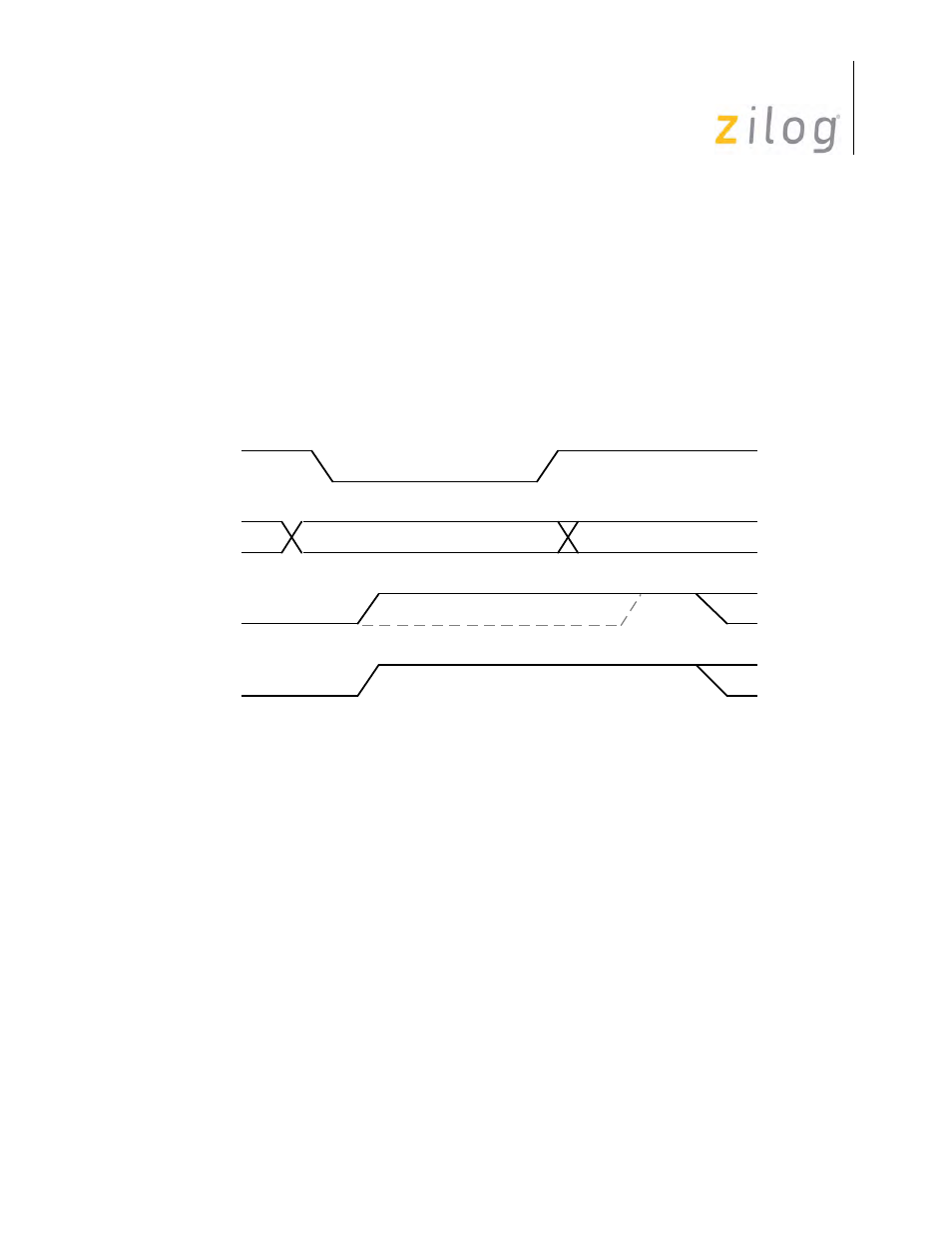Zilog Z80230 User Manual
Page 73

SCC/ESCC
User Manual
UM010903-0515
Interfacing the SCC/ESCC
66
DMA Request On Transmit (using /DTR//REQ)
A second Request on Transmit function is available on the /DTR//REQ pin. This mode is selected
by setting D2 of WR14 to 1. /REQ goes Low when the Transmit FIFO is empty if WR7' D5=1, or
when the exit location of the Transmit FIFO is empty if WR7' D5=0. In the Request mode, /REQ
follows the state of the Transmit FIFO even though the transmitter is disabled. While D2 of WR14
is set to 0, the /DTR//REQ pin is /DTR and follows the inverted state of D7 in WR5. This pin is
High after a channel or hardware reset and in the DTR mode.
The /DTR//REQ pin goes inactive High between each transfer for a minimum of one PCLK cycle
(
/DTR//REQ Deassertion Timing
ESCC:
The timing of deactivation of this pin is programmable through WR7' bit D4. The /DTR//REQ
waits until the write operation has been completed before going inactive. Refer to Z85230/L AC
spec #35a TdWRr(REQ) and Z80230 AC spec #27a TdDSr(REQ). This mode is compatible with
the SCC and guarantees that any subsequent access to the ESCC does not violate the valid
access recovery time requirement.
If WR7' D4=1, the /DTR//REQ is deactivated with identical timing as the /W/REQ pin. Refer to
Z85230/L AC spec #35b TdWRr(REQ) and Z80230 AC spec #27b TdDSr(REQ). This feature is
beneficial to applications needing the DMA request to be deasserted quickly. It prevents a full
Transmit FIFO from being overwritten due to the assertion of REQUEST being too long and
being recognized as a request for more data.
/DTR//REQ
/WAIT//REQ
/DS or /WR
D7-D0
Transmit Data
ESCC WR7' D4 =1
ESCC WR7' D4 =0, or CMOS/NMOS version
